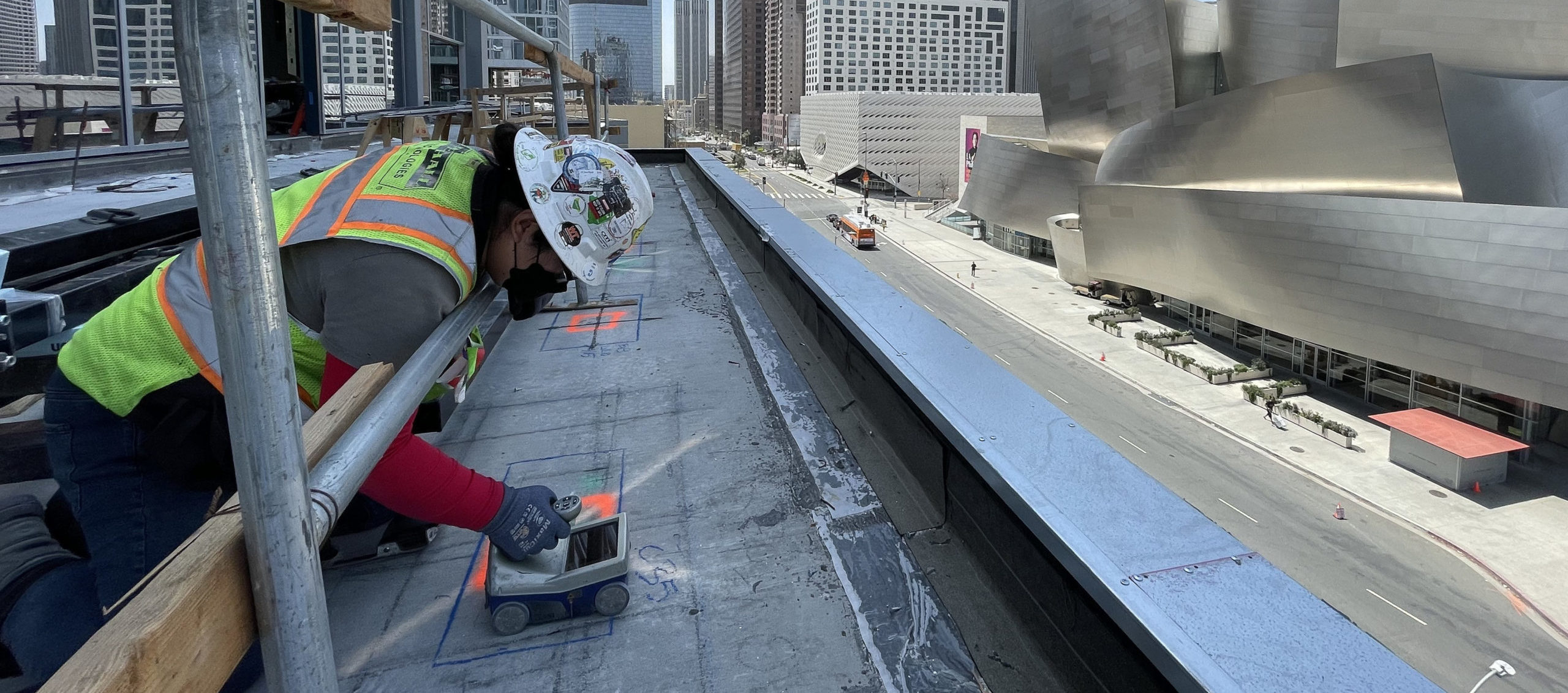Making Best Use Of Performance and Decreasing Threats: The Function of Concrete Scanning in Construction
In the world of construction, where precision and security are critical, the use of concrete scanning technology has come to be an essential tool for task managers and engineers alike. By taking advantage of innovative scanning approaches, construction teams can navigate complicated atmospheres with heightened efficiency while alleviating prospective threats that can threaten both timelines and budgets.
Importance of Concrete Scanning
Concrete scanning plays a vital duty in making certain the architectural stability and security of building projects by accurately spotting embedded things and possible dangers within concrete structures. By utilizing numerous scanning innovations such as ground-penetrating radar (GPR) and electromagnetic induction, construction groups can determine rebar, post-tension wires, channels, and other hidden barriers before drilling, reducing, or coring right into concrete. This proactive approach assists prevent pricey damages, injuries, and task delays that may emerge from mistakenly striking these items during building and construction activities.
Furthermore, concrete scanning help in compliance with safety guidelines and top quality criteria by supplying accurate information regarding the condition of concrete structures. It permits project supervisors and designers to make educated choices relating to architectural modifications, fixings, or reinforcements based upon trustworthy data acquired via scanning processes. Furthermore, the specific mapping of embedded items makes certain the reliable implementation of building strategies, minimizing the danger of mistakes and guaranteeing the durability and toughness of the constructed environment. Eventually, spending in concrete scanning solutions adds to the overall success and safety of building and construction tasks.

Advanced Innovation in Construction
Offered the raising need for accuracy and effectiveness in building and construction techniques, the combination of sophisticated technology has actually come to be critical in improving task results and making certain optimal security actions. BIM permits for much better collaboration amongst stakeholders, boosted visualization of the job, and enhanced decision-making throughout the building and construction procedure. The execution of Enhanced Reality (AR) and Digital Fact (VR) innovations in construction layout and planning stages allows stakeholders to picture the final item, determine potential concerns, and make required changes before building starts.

Advantages of Object Mapping
The usage of item mapping innovation in construction projects offers a wide range of benefits that improve project preparation and implementation. Among the vital advantages of item mapping is its capability to offer in-depth and exact info regarding the location of underground energies, architectural aspects, and other objects within the construction website. This details is critical for making certain that excavation and exploration activities are carried out securely and successfully, decreasing the threat of damage to existing infrastructure.
In addition, item mapping technology makes it possible for building groups to develop precise 3D designs of the site, enabling much better visualization of the task and improved control among different professions - RainierGPR Concrete Scanning. This boosted spatial recognition assists to identify possible clashes and conflicts early in the drawing board, reducing the demand for costly rework and hold-ups during building and construction
Moreover, things mapping can also enhance the documentation procedure by supplying digital records of the website in the past, throughout, and after construction. These records act as useful references for future maintenance and restoration tasks, ultimately enhancing the lasting efficiency and sustainability of the constructed environment.
Avoiding Expensive Blunders
Object mapping innovation's role in construction extends past enhancing task planning and implementation to encompass a crucial element: avoiding costly blunders. By employing sophisticated concrete scanning techniques, building groups can identify prospective hazards such as rebar blockage, post-tension cables, or spaces within concrete frameworks. Generally, the positive use of concrete scanning innovations in construction projects substantially lessens the risk of errors and inevitably adds to cost savings and task efficiency.
Ensuring Security and Top Quality
To support see this site the greatest requirements of safety and security and quality in construction projects, the execution of concrete scanning innovation plays a pivotal role. By using innovative scanning strategies such as ground-penetrating radar (GPR) and electromagnetic induction, construction teams can find potential dangers concealed within concrete frameworks prior to starting any kind of job. This proactive approach not only reduces the danger of accidents on the construction site but also guarantees the structural stability of the building.
Concrete scanning also assists in validating the positioning of rebar, avenues, and post-tension cords, assuring that these aspects are properly positioned based on the style specs. This precision in locating crucial components helps prevent mistakes throughout the building and construction process, eventually resulting in a higher quality finished item. Moreover, by determining any type of abnormalities or incongruities within the concrete early, necessary adjustments can be made without delay, lowering the possibility of rework and costly hold-ups.
Essentially, concrete scanning technology offers as an important device in guarding both the security of read this post here construction employees and the general top quality of the constructed environment. Its capacity to guarantee and find prospective threats adherence to style standards makes it an essential property in contemporary building techniques.

Conclusion
In final thought, concrete scanning plays a critical duty in maximizing efficiency and lessening dangers in construction jobs. By making use of innovative innovation for item mapping, prospective costly mistakes can be prevented, ensuring safety and security and top quality of the last structure. It is essential for construction companies to focus on the usage of concrete scanning to enhance performance, mitigate dangers, and provide top notch cause their jobs.
Concrete scanning plays a vital role in guaranteeing the architectural integrity and safety of building and construction jobs by accurately identifying embedded things and prospective risks within concrete frameworks. The application of Augmented Fact (AR) and Online Fact (VIRTUAL REALITY) innovations in construction layout and planning phases allows stakeholders to envision the final item, recognize prospective problems, and make required adjustments prior he said to construction starts. By employing innovative concrete scanning methods, construction groups can recognize prospective risks such as rebar congestion, post-tension wires, or spaces within concrete frameworks. Generally, the proactive use of concrete scanning technologies in building tasks substantially minimizes the danger of mistakes and inevitably contributes to set you back savings and task effectiveness.
To maintain the highest standards of safety and high quality in building and construction jobs, the implementation of concrete scanning innovation plays a crucial role.